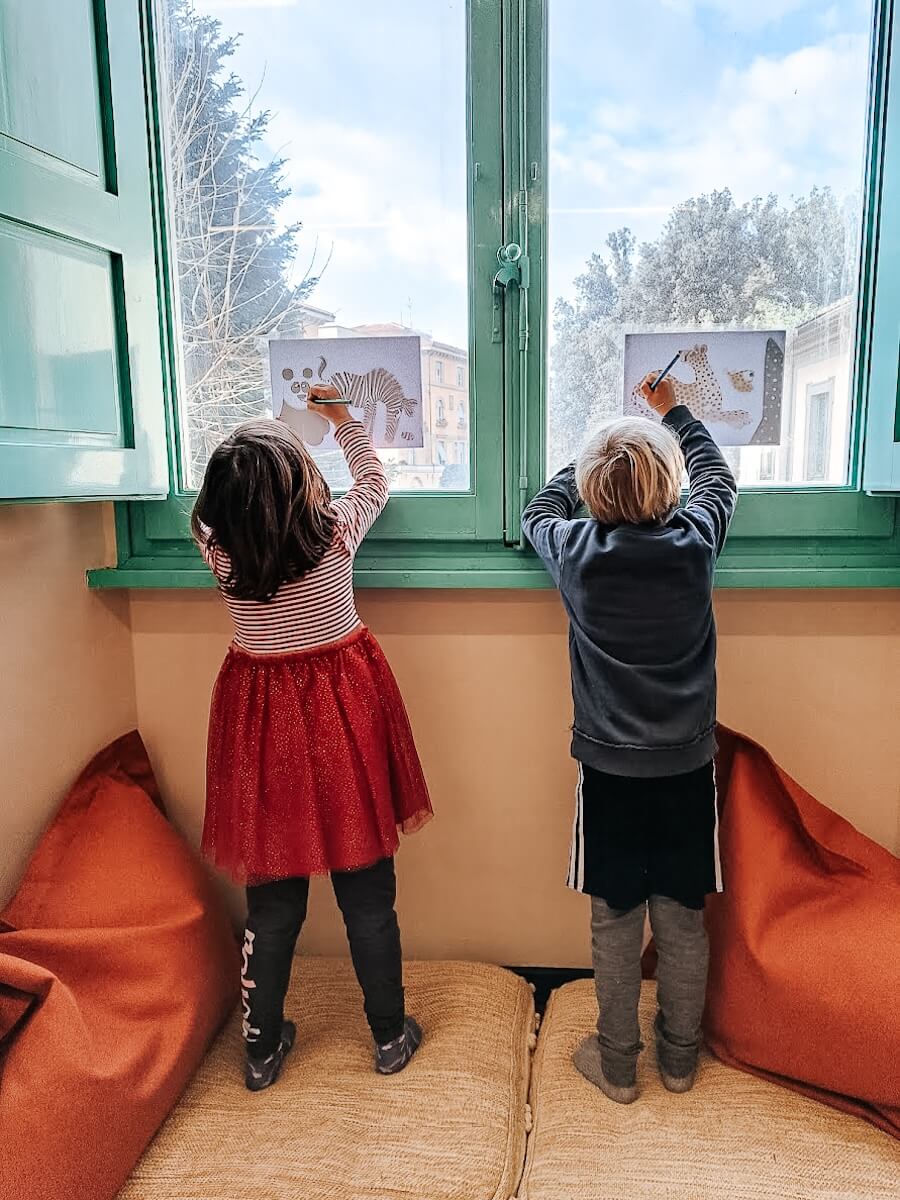
Traveling abroad as a family is an exciting adventure – but for children, it can also be a confusing and emotional time. Uprooting their world of friends, school, and familiarity is no small thing.
As you near your departure date, you may begin to notice mood swings, withdrawal, or other uncharacteristic behavior. All of these are normal in the emotional roller coaster ride. These highs and lows are common with long term, and even short term travel. But with some thoughtful navigation, clear communication, and a bit of forward planning you can make the journey smoother.
No one understands better than we do, that while global travel is often life-changing, it’s also challenging, and when children are involved, the potential hurdles are even higher.
We’re here to show you that with some preparation, you can help your child not only adapt to travel to a new country, but also thrive there. Below we share six key steps – filled with our best practical tips and takeaways – to prepare your child or children for a smooth transition and to set them up for success!
Click here to find out more about Boundless Life
Or continue reading for our 6 steps to confident young travelers👇

1. Talk About the Travel Early
Start the conversation early. As soon as you are seriously considering overseas travel, include your children in age appropriate ways.
Do not spring a big international trip on them at the last minute. Share the where, when, and why. Kids cope better when they understand the reasons behind travel and change. Give them time to digest the news and be ready for lots of questions. Answer honestly. If you do not know yet, say so and promise to find out. This shows their concerns matter and helps them feel more in control.
When you talk about the trip, stay calm, positive, and confident. Children naturally take cues from their parents’ emotions. If you approach it with optimism and excitement, they are more likely to feel hopeful and curious rather than scared. Let them know it is okay to feel nervous or sad too, and that you are all in this adventure together.
Practical tip: Give each child a travel journal. Encourage short, regular entries about feelings and questions before and during the trip.

2. Keep Positive & Listen to the Feelings
Never dismiss your child’s worries, but do frame the journey as a positive adventure. Your enthusiasm is contagious. Try, “We will taste new foods, meet new friends, and see amazing places.” Highlight benefits of your destination, such as beaches, parks, museums, or a new activity they have been curious about. If they will join a local school or program, mention clubs or teams they might love.
Be honest that some parts will be hard, like missing people or adjusting to new routines, and emphasize teamwork. Together, you can handle it. Kids draw confidence from your confidence.
Practical tip: Get creative with younger kids. Role play airport day with stuffed animals, run a packing race, or host a new country theme night where you cook a dish from your destination and talk about your first day there.

3. Involve Your Child in Planning
Reduce anxiety by giving kids an active role in the plan. When children participate, the trip feels less like something happening to them and more like a family adventure they are part of.
Research the destination together. What is the weather like? Which foods are popular? What animals live there? Explore online or at the library and let curiosity lead.
If your travel involves a longer stay or a Boundless Life program, include them in looking at accommodations and education options. Show photos or virtual tours. If you are Boundless bound, explore the Education Center and neighborhood photos together and read about extracurriculars or events. Familiarity turns scary new into I recognize this.
Give kids simple travel helper jobs. They can make a must pack list, assemble their plane day backpack, or label storage boxes if you are leaving items behind. Older kids can map the travel route, for example “Let’s see where we will fly or drive,” or pick one must do activity in the new country. Participation builds empowerment.

4. Explore New Culture & Language
One big unknown is culture, including new foods, holidays, and possibly a different language. Start making the unfamiliar familiar before you leave.
Practical tips:
- Cook a child friendly meal from your destination or host a family movie night set there.
- If a new language is spoken, learn basics together, such as hello, thank you, and favorite foods or animals. Download Duolingo or learn a song, label a few household items with sticky notes, and sprinkle simple phrases into daily life.
- Explore children’s TV shows and books from that culture or language. Recognizing characters and stories gives a welcome confidence boost.
- Visualize the place. Pull out maps, look at photos of the city or neighborhood, and explore parks, schools, landmarks, and typical homes. Try Google Street View to walk your new street.
The more you pre-experience culture, language, and visuals, the more intriguing, and less intimidating, the destination becomes.

5. Maintain Routines & Bring Comforts from Home
Amid all the change, constants are your child’s best friend. Before you travel, decide which daily rituals will stay the same. If you always read a bedtime story or do Sunday pancakes, plan to keep that tradition abroad. Familiar routines, even in new time zones, offer reassuring continuity.
Pack a few comfort items your child chooses, such as a favorite teddy, blanket, family photos, or a pillowcase. On night one in a new bedroom, a familiar texture or smell can be incredibly soothing. Some parents spritz a blanket with a calming scent or your usual laundry detergent to recreate home.
Think about first day comforts. A small stash of favorite breakfast cereal, peanut butter, or snacks from home can bridge the gap until you find local equivalents. This is especially helpful for picky eaters.
Once you land, establish a simple daily rhythm quickly. Re anchoring routines signals that life continues in a reliable way, even in a brand new place.

6. Say Meaningful Goodbyes & Keep Connections
Leaving friends, relatives, and beloved teachers is often the hardest part for kids. Help them say a proper goodbye and set up ways to stay close.
Host a casual farewell for your child and their friends and yours. Add a nod to the destination, such as flag colors in the decor or a snack from your future country, to keep the mood celebratory.
Create keepsakes. Try a notebook with messages and photos, or a T shirt or scrapbook signed by classmates. Tangible reminders are comforting on lonely days.
Set up ongoing communication:
- For older kids, exchange contact info and choose a safe messaging app or platform they already use.
- For younger kids, start a pen pal exchange. Many still love sending and receiving real mail.
- Schedule a weekly video call with grandparents, or let your child choose a regular time to chat with a best friend. Postcards from your new country and show and tell video calls from their new room keep relationships alive.
When departure day comes, thoughtful goodbyes and clear contact plans create closure and reassurance.
Conclusion: Embrace the Journey Together
Preparing your child for life in a new country is not a one and done checklist. It is an ongoing practice of communication, reassurance, and shared discovery. There will be ups and downs. Some days they will bounce with excitement. Other days they will feel wobbly about leaving.
Through it all, remind them you are a team and their feelings matter. Celebrate small wins, be patient on tough days, and remember that adjustment takes time.
Expat and globally mobile kids, often called Third Culture Kids, tend to grow remarkably adaptable, culturally sensitive, and open minded. In navigating change, they learn resilience. In meeting friends from different backgrounds, they gain a wider perspective.
So take a breath, embrace the adventure, and step forward together. With preparation, empathy, and a dash of excitement, you can help your child feel ready for their new country, and ready for the wonderful, boundless life that awaits.





.avif)
